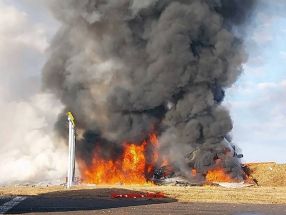Bangladesh to raise wages for garment workers
DHAKA — Bangladesh's government plans to raise the minimum wage for garment workers, a Cabinet minister said yesterday, after the deaths of more than 1,100 people in the collapse of a factory building focused international attention on the textile industry's dismal pay and hazardous working conditions.
A new minimum wage board will issue recommendations for pay raises within three months, Textiles Minister Abdul Latif Siddiky said. The Cabinet will then decide whether to accept those proposals.
The wage board will include representatives of factory owners, workers and the government, he said.
The April 24 building collapse, the world's worst garment industry disaster, has raised alarm about conditions in Bangladesh's powerful textile industry, which makes clothing for major retailers around the world.
Working conditions in the $20 billion industry are grim, a result of government corruption, desperation for jobs, and industry indifference. Minimum wages for garment workers were last raised by 80 percent to 3,000 takas ($38) a month in 2010 following protests by workers.
Rescue workers said 1,125 bodies had been recovered by late yesterday from the ruins of the fallen Rana Plaza building, which housed five garment factories employing thousands of workers.
Overnight rainstorms had halted the recovery efforts, but by midday the teams were back at work using hydraulic cranes, bulldozers, shovels and iron cutters as they continued looking for bodies more than two weeks after the eight-story building collapsed.
"We are still removing the rubble very carefully as dead bodies are still coming up," said Maj. Moazzem Hossain, a rescue team leader. "The dead bodies are decomposed and beyond recognition."
Hossain said they are trying to identify the bodies by their identity cards. "If we get the ID cards with the bodies then we are lucky," he said.
On Friday, the search teams received a much-needed boost when they found a young seamstress who had managed to survive for 17 days on dried food and bottled and rain water.
More than 2,500 people were rescued shortly after the April 24 disaster, but until 19-year-old Reshma Begum was found the crews had gone nearly two weeks without discovering anyone alive.
Doctors said Begum's condition was improving after treatment for dehydration, insomnia, stress and weakness.
Before Begum's rescue, the last survivor was found April 28, but her story ended in tragedy. As workers tried to free Shahina Akter, a fire broke out and she died of smoke inhalation.
Officials say the owner of Rana Plaza illegally added three floors and allowed five garment factories in the building to install heavy machines and generators, even though the structure was not designed to support such equipment.
The owner and eight other people, including the owners of the garment factories, have been detained.
The Textiles Ministry has also begun a series of factory inspections and has ordered about 22 closed temporarily for violating safety and working standards.
- Latest
- Trending
































